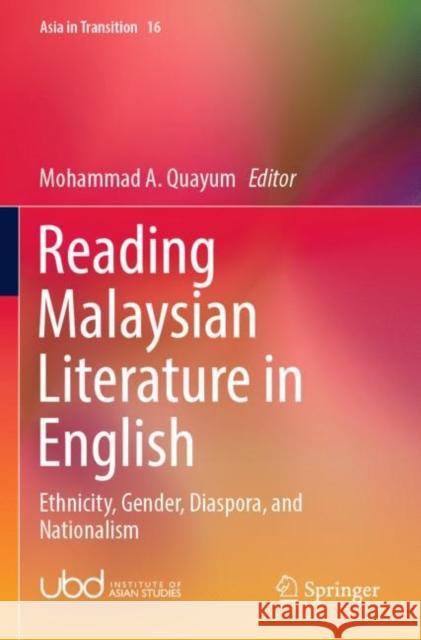Reading Malaysian Literature in English: Ethnicity, Gender, Diaspora, and Nationalism » książka
Reading Malaysian Literature in English: Ethnicity, Gender, Diaspora, and Nationalism
ISBN-13: 9789811650239 / Angielski / Miękka / 2022 / 216 str.
Reading Malaysian Literature in English: Ethnicity, Gender, Diaspora, and Nationalism
ISBN-13: 9789811650239 / Angielski / Miękka / 2022 / 216 str.
(netto: 497,21 VAT: 5%)
Najniższa cena z 30 dni: 501,19
ok. 22 dni roboczych
Dostawa w 2026 r.
Darmowa dostawa!
This book brings together fourteen articles by prominent critics of Malaysian Anglophone literature from five different countries: Australia, Italy, Malaysia, Singapore, and the US. It investigates the thematic and stylistic trends in the literary products of selected writers of the tradition in the genres of drama, fiction, and poetry, from its beginnings to the present, focusing mainly on the postcolonial themes of ethnicity, gender, diaspora, and nationalism, which are central to the creativity and imagination of these writers. The book explores the works of not just the established writers of the tradition but also those who have received little critical attention to date but who are equally gifted, such as Adibah Amin, Edward Dorall, Rehaman Rashid, and Huzir Suleiman. The chapters collectively address the challenges and achievements of writers in the English language in a country where English is widely used in daily life and yet marginalised in the creative domain to elevate the status of writings in the national language, i.e., Bahasa Malaysia. The book will demonstrate that in spite of such recurrent neglect of the medium, Malaysia has produced a number of outstanding writers in the language, who are comparable in creativity and craftsmanship to writers of other Anglophone traditions. The book will be of interest to readers and researchers of Malaysian literature, postcolonial literatures, minority literatures, gender studies, and Southeast Asian studies.
This book brings together fourteen articles by prominent critics of Malaysian Anglophone literature from five different countries: Australia, Italy, Malaysia, Singapore, and the US. It investigates the thematic and stylistic trends in the literary products of selected writers of the tradition in the genres of drama, fiction, and poetry, from its beginnings to the present, focusing mainly on the postcolonial themes of ethnicity, gender, diaspora, and nationalism, which are central to the creativity and imagination of these writers. The book explores the works of not just the established writers of the tradition but also those who have received little critical attention to date but who are equally gifted, such as Adibah Amin, Edward Dorall, Rehaman Rashid, and Huzir Suleiman. The chapters collectively address the challenges and achievements of writers in the English language in a country where English is widely used in daily life and yet marginalised in the creative domain to elevate the status of writings in the national language, i.e., Bahasa Malaysia. The book will demonstrate that in spite of such recurrent neglect of the medium, Malaysia has produced a number of outstanding writers in the language, who are comparable in creativity and craftsmanship to writers of other Anglophone traditions. The book will be of interest to readers and researchers of Malaysian literature, postcolonial literatures, minority literatures, gender studies, and Southeast Asian studies.











